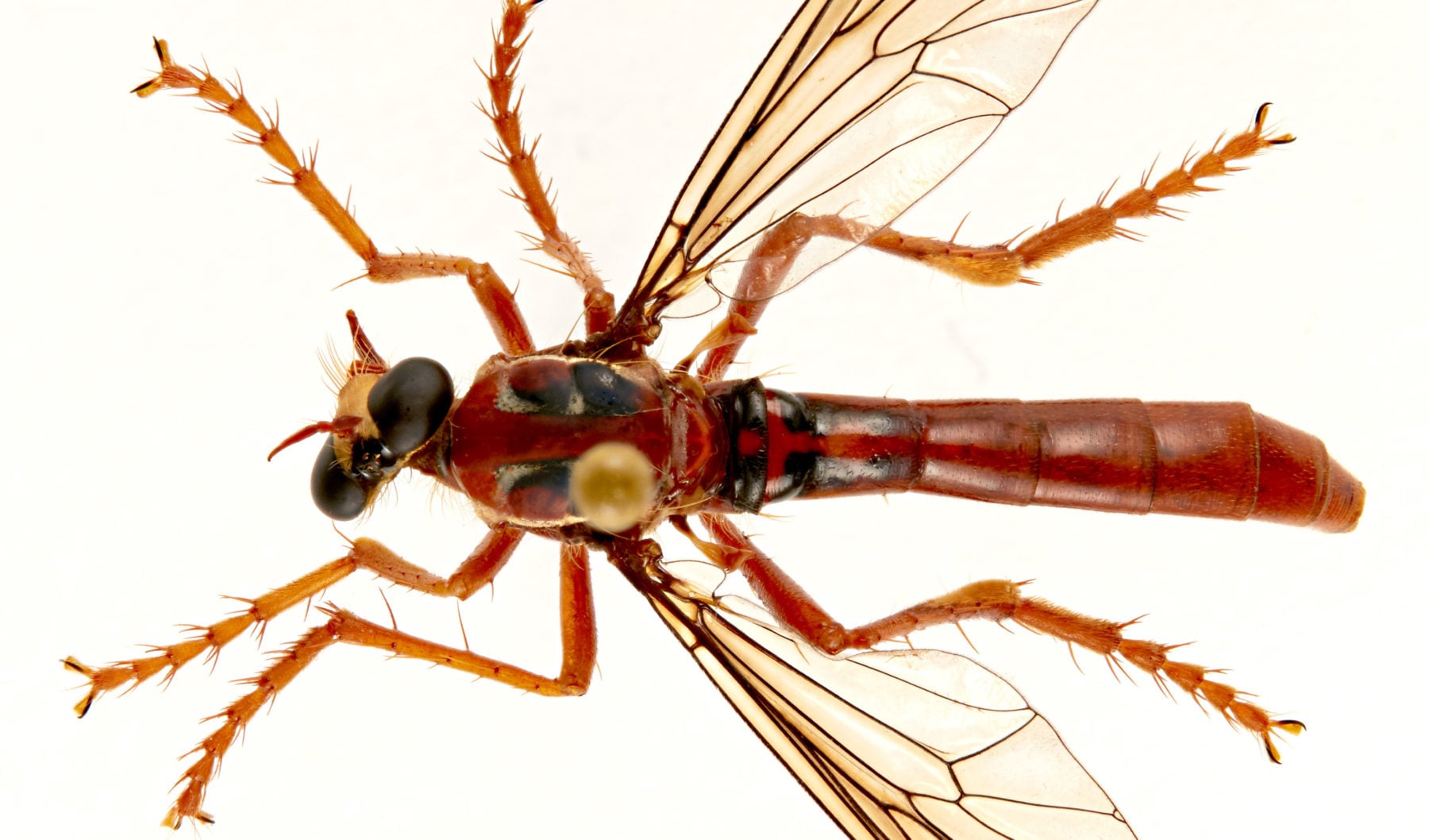It’s official: Australia is home to a fly named after Deadpool

MEET THE NEWLY named Deadpool fly (Humorolethalis sergius). It’s among 165 new species recently given scientific names by CSIRO.
“Deadpool fly is an assassin with markings on its back that resembles Deadpool’s mask,” says CSIRO entomologist Bryan Lessard.
“We chose the name Humorolethalis sergius. It sounds like lethal humour and is derived from the Latin words humorosus, meaning wet or moist, and lethalis meaning dead.”

There’s also Stan Lee’s fly, Thor’s fly, Loki’s fly and Black Widow’s fly, who also resemble their namesakes in various ways.
And while giving new species quirky names is fun, Bryan says it’s also important conservation work because only a quarter of Australian insects are known to science.
“We named two new species of colourful soldier flies from recently burned national parks,” Bryan says. “These species are found nowhere else in the world.
“Soldier flies have an important role in nature as nutrient recyclers. Losing such species could have knock-on effects in ecosystems and food chains.
“We are interested in identifying new insect species that might be useful pollinators, nutrient recyclers or the next food source to support the agricultural sector.”
CSIRO bee and wasp expert Juanita Rodriguez also named a new species of spider wasp believed to be impacted by the fires.
“We discovered a new species of spider wasp that is only found in an area badly impacted by bushfires this summer, so now we can carefully monitor its recovery,” Juanita says.
“Spider wasps have venom that could be useful for treating Alzheimer’s disease and epilepsy, but most Australian spider wasp species are unknown to science.”
On top of the five new fly species, CSIRO also named 151 new insects, two new fish, one mite and three new subspecies of bird.





